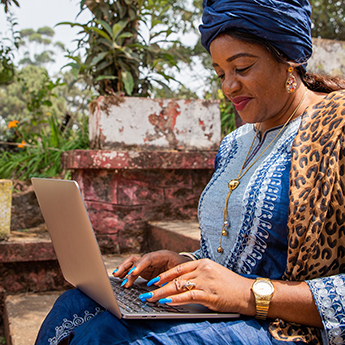Toolkits
Sexual & Reproductive Health Care In Emergencies Toolkit (SRH)



overview
This section outlines stages to consider when undertaking SRH preparedness efforts. The stages draw on information collected through a literature review and key informant interviews (see Acknowledgments and List of Key Informants). Links to Learning Briefs and resources are included where applicable. This section is divided into the following stages: Initiating, Assessing, and Implementing SRH preparedness.
Stage 1 Initiating SRH Preparedness
Link individual SRH activities at all relevant levels (national, subnational, and community) to collectively strengthen risk management and hazard resilience capacities.

Adopt a systemic approach to SRH preparedness.
Treat SRH preparedness as an element of health system strengthening and resilience.
Use the Minimum Initial Service Package (MIP) and the Health-Emergency Disaster Risk Management (Health-EDRM) framework to guide SRH preparedness activities.
Contextualize and adapt preparedness based on health system capacity, hazard types, and risk significance.
Developing rights-based, people-centered, and inclusive SRH preparation.
Stage 2 Assessing SRH Preparedness
The delivery of lifesaving SRH care during emergencies requires collaboration and coordination among various stakeholders. This is also true of preparedness. Identifying the different actors—from community-based organizations to health and protection actors to policymakers—is critical to ensuring comprehensive coverage of preparedness activities and shared responsibility. When assessing SRH preparedness, identify the range of stakeholders to engage.

Identify and collaborate with key stakeholders to jointly assess preparedness.
Use available tools to assess preparedness.
Inform assessments using available SRH-related data and relevant previous or regional learning.
Stage 3 Implementing SRH Preparedness
This stage covers steps for implementing SRH preparedness actions. The steps are categorized under the ten Health-EDRM Framework components and functions to assist users in structuring their SRH preparedness within the Framework.
1. Policies, Strategies, & Legislation
2. Planning & Coordination
3. Human Resources
4. Financial Resources
5. Information & Knowledge Management
6. Risk Communications
7. Health Infrastructure & Logistics
8. Health & Related Services
9. Community Capacities for Health-EDRM
10. Monitoring & Evaluation


Policies, Strategies, & Legislation
Integrate the SRH/MISP into existing health, DRR, and emergency health policies, strategies, and legislation at both national and subnational levels.
Integration is a long and iterative process that requires considerable advocacy on the importance of SRH. Map out the relevant policies, strategies, and legislation, and assess whether they would enable or hinder the MISP during response. Identify policies, strategies and legislation to target for SRH/MISP integration. SRH and DRM actors often collaborate on this when undertaking the MISP Readiness Assessment. The effort is strengthened when gender and GBV/ protection actors are also involved. If integration is possible only at the subnational level, move forward with that and then advocate later for national-level policy. (See Resources for the IAWG DRM-H SRH Fact Sheet for advocacy points, the MISP Readiness Assessment for overall assessment questions, and the IFRC Disaster Preparedness and Response Law Checklist and Handbook for assessing laws. See the Policy Integration brief for country-level examples).
Monitor the revision schedule of targeted policies, strategies, and legislation.
Become familiar with the policy review process to identify opportunities to integrate SRH/MISP language when revisions are scheduled. (See Policy Integration brief).
Integrate the MISP into the relevant national SRH or GBV policies, strategies, and laws to ensure SRH in emergencies is properly covered across the humanitariandevelopment-peace nexus.
Identify any further policies or strategies, such as those for youth, that could be targeted for integration. (See Inclusion and Policy Integration briefs.)
Planning & Coordination
Foster multi-agency and multi-sectoral collaboration for SRH preparedness.
Activities to advance SRH preparedness require multi-sectoral collaboration. Identify stakeholders relevant to the context, the types of risks and hazards faced, and the structure of the existing DRM system. Consider representatives from: SRH (from all MISP technical fields) and overlapping sectors such as gender and protection; DRM and emergency health decision makers; government finance, education, and youth departments; relevant humanitarian and development INGOs and UN agencies and humanitarian response clusters; relevant local NGOs and civil society, including those representing marginalized groups (see Advancing Gender-Transformative Localization in Resources and the Community brief); the private sector, where applicable; and first responders (such as health providers, the army, emergency service providers, and the National Red Cross/Red Crescent society).
Establish or strengthen coordination bodies to advance SRH preparedness.
New coordination bodies can be established or SRH preparedness can be integrated into existing bodies, such as national SRH technical working groups, humanitarian preparedness and response forums, or committees in charge of DRM. Coordination bodies should be institutionalized if possible to assure sustainability and avoid challenges with staff turnover. Members should represent a range of relevant stakeholders, notably SRH and DRM representatives (see previous step for expansive list). Consider opportunities to link with other coordination groups to build MISP awareness across different sectors or strengthen overlapping goals.
Use joint action plans and/or terms of references (TORs) to advance SRH preparedness work.
Preparedness efforts are best supported by multistakeholder coordination and a collaborative model that enables different actors to contribute to different aspects of preparedness. Having joint TORs or action plans that clearly outline the roles and responsibilities of stakeholders can help clarify and advance preparedness work. These plans should be monitored for accountability and consulted when activating a response. (See Coordination brief for examples. In Resources, see the MISP Readiness Assessment for action planning and the Inter-Agency Field Manual for a sample SRH Coordinator TOR).
Coordinate at all relevant levels of the health system.
Establish and connect coordination bodies at the national, subnational, and community levels. On the community level, engage local government officials (including those focused on disaster and health) as well as health providers, women’s groups, community leaders, schools, religious leaders, youth networks, and other organizations representing marginalized populations.
Human Resources
Invest in subnational and community actors.
In countries that face frequent disasters at subnational levels, such as Indonesia and the Philippines, it might be district authorities and community members who respond and manage the response and recovery. Investing in their leadership for preparedness and response is essential.
Support local champions.
Local champions can be instrumental in advancing SRH preparedness work, such as by facilitating the integration of the MISP into medical professional curricula or advocating attention to SRH by district health officials. Once champions are identified, provide meaningful support for their continued engagement to help them carry their work forward. (See Policy Integration, Coordination, and Curriculum Integration briefs for examples of local champions).
Build workforce capacity.
Prepare the health workforce to be quality first responders. Health providers, even those working outside the scope of SRH, should understand the importance of SRH in emergencies, and SRH providers should be trained to provide the MISP when challenged by resource or mobility constraints. Identify, where possible, opportunities for SRH/ emergency response simulations and other trainings. Attend to the safety, health, and wellbeing of first responders to support their work and reinforce their commitment.
Develop surge capacity.
Countries should consider whether building a national roster or linking to a regional roster for surge capacity is appropriate, how trained providers will be deployed to affected regions (from within or outside the country), and who will ensure that providers are ready. Providers must be trained on the MISP, including follow-up trainings (in person or online) to ensure quality service provision. National medical associations should be leveraged to build surge capacity and maintain rosters at both the national and regional level of all those trained.
Integrate the MISP into pre-service and in-service curricula.
In collaboration with relevant ministries, identify training curricula where the MISP can be integrated. Consider opportunities for the accreditation of trained health providers on the MISP. (For detailed learnings from different countries, see Curriculum Integration brief. For more information about IAWG’s Training Partnership Initiative that supports MISP refresher trainings in risk-prone countries, see SRH Service Delivery Training Materials in Resources).
Invest in national networks.
National networks that have members in communities should be included in preparedness and engaged for surge and coordination during emergencies. These may include national midwives associations, the association of nurses, medical and health associations (obstetricians/ gynecologists, pediatricians, general physicians, public health specialists), and networks representing women, youth, and people of diverse SOGIESC.
Financial Resources
Identify government and external funding sources.
Funding for national readiness often depends on a combination of domestic government investment and external resources. The Asia Pacific region has seen considerable attention to preparedness because of the Australian government’s support for IPPF and UNFPA initiatives, which in turn has led national governments such as the Philippines and Indonesia to allocate funding for SRH preparedness (see Coordination brief). In the Eastern Europe and Central Asia (EECA) and Latin America and the Caribbean (LAC) regions, UNFPA’s support has been instrumental. Given the burden on humanitarian funding for existing emergencies, funding for preparedness should be identified through various streams across humanitarian, development and peace sectors.
Tap funding for coordinated activities.
Identifying MISP readiness gaps without funding to address them can reduce government buy-in and momentum for SRH preparedness work. When possible, use existing funding to support the joint activities specified in the MISP readiness assessment. Where resources are constrained, focus on costeffective and high-impact activities such as advocacy and partnership building.32
[31] UNFPA, Shelter from the Storm: State of World Population 2015 (New York: UNFPA, 2015). [32] Tanabe, Building National Resilience.Information & Knowledge Management
Ensure that SRH and related gender considerations are integrated into DRM information and knowledge management systems.
Include community-level early warning systems that leverage women and youth networks or local DRM committees, and link community leaders to SRH/DRM mechanisms to stay up-to-date and informed. (See Community and Inclusion briefs.)
Integrate SRH into DRM assessments on risks, vulnerabilities, and capacities at the national, subnational, and community levels.
Identify opportunities with relevant stakeholders to integrate SRH into any risk assessments and vulnerability assessments carried out during the preparedness stage. These can be as small as IFRC’s vulnerability and capacity assessment or as large as OCHA’s multiple large-scale assessments. As these are often employed when developing response strategies or emergency funding appeals, it is important to ensure that SRH is integrated.
Risk Communications
Develop an effective communication strategy.
Ensure that affected communities receive accurate and timely information. Communities must be informed on current risks, the importance of seeking care for essential SRH services, where to seek care, and ways to stay safe and healthy. When developing the risk communication strategy, gather data on knowledge and perceptions related to SRH, communication patterns, at-risk populations, language, religion, influencers, and available health services. Coordinate and collaborate with other stakeholders to guarantee consistent messaging. Ensure effectiveness by using influencers, a variety of mediums, and tailored approaches for specific populations. Collaborate with different members of the community to design and pilot communication approaches. Different approaches and mediums can be adopted for different populations, and all should be monitored. (See Resources for WHO’s Risk Communication and Community Engagement Action Plan Guidance.)
Ensure communications are accessible.
Engage with different community mechanisms to guarantee that all community members—regardless of language, abilities, literacy, or age—have access to information. Explore with each community group (for example, adolescents, women, people living with HIV, people of diverse SOGIESC, women and girls with different disabilities) how they both receive and communicate emergency health information. Consider radio, text messages, peers, community health workers and leaders, posters, leaflets, and information boards.
Health Infrastructure & Logistics
Assess facilities at every level of the health system to ensure that they can “remain intact, accessible and functioning” during emergencies.34
In the Dominican Republic and Belize, Engineers Without Borders-USA and IPPF Western Hemisphere Region are developing resilience guides and pre-emergency and post-emergency infrastructure checklists to help local clinic managers assess the operational capacity of health facilities. (See Resources for PAHO Health Sector Self-Assessment Tool.)
Create an enabling environment for supply chain preparedness.
Advocate policies, political will, and financing to include SRH commodities on essential medicine lists and standard treatment guidelines. Streamline processes to allow for easy importation, fast-tracking, and prepositioning, both during routine deliveries and in preparation for emergencies. If the country is at high risk for emergencies, work with national authorities on preauthorizing the import of InterAgency Reproductive Health kits. Improve coordination among government, NGOs, donors, and the private sector to support and align supply chain preparedness activities by engaging existing coordinating bodies. Make sure that all strategies include a preparedness component and that key organizations are added to coordinating bodies to discuss strategies, help improve policies, and mobilize funding to support preparedness. Advocate the inclusion of SRH and commodity security in the country’s existing disaster preparedness activities for the wider health sector and beyond.
Develop continuity of operations for essential supply chain functions.
Create a continuity of operations plan (COOP) for the supply chain. This includes a plan to secure the availability of key RH/FP products in case of an emergency by: 1) maintaining essential supply chain functions and the key resources that support them, 2) carrying out risk assessments, and 3) developing contingency plans for specific risk scenarios and processes to build redundancy and resilience into the supply chain. The COOP should be the overarching plan that includes all preparedness plans and actions, including indicators and Standard Operating Procedures (SOPs), to ensure the continuity of all logistics operations. Update and disseminate the COOP on a regular basis to all key stakeholders.
Identify key health products that will wbe secured. In addition to adding key SRH products to existing essential medicine lists and standard treatment guidelines and streamlining processes for importation, review all the products required to maintain comprehensive SRH services through existing programming and determine the ideal list of products that will be provided during an emergency, with upper and lower thresholds of the range of products that will be managed. The inclusion of EC and long-term methods in these lists can help protect the rights of all women in emergencies.
Make plans to maintain critical resources for all essential supply chain functional areas that need to be maintained in an emergency. The key operations or functions that need to be maintained include product selection, quantification, procurement, inventory strategy, distribution, and warehousing, as illustrated in Figure 5. For each of these functional areas, develop plans to secure the following critical resources: people, processes, tools, information, assets/supplies, and financing.
Carry out risk assessments for functional and resource areas. As part of the COOP, conduct risk assessments for each of the functional areas and resource areas. The risk assessments should identify any actual or potential weaknesses or threats (internal or external) to the supply chain. If formal risk management is practiced as part of the supply chain’s routine operations, use this documentation to build on for disaster preparedness. Define the context and scope for the risk assessment and follow these steps: 1) set performance objectives and identify relevant stakeholders, 2) identify sources of risk in collaboration with stakeholders, and 3) determine likelihood and impact of risk events. Sources of risk will typically be discussed and identified in a workshop setting, where stakeholders are present to give feedback on a variety of scenarios. Risks are then scored by likelihood and impact, giving managers a single score for prioritization.35
Develop and continuously update contingency plans. Based on the risk priorities from the assessment, identify strategies for managing risks, such as reducing or hedging risks, and develop a small number of specific contingency plans to address vulnerabilities from most likely scenarios. Include ways to reduce impact to the supply chain, such as by creating redundancy through multiple sources of products, identifying varying routes of access to points of distribution, prepositioning products closer to vulnerable populations, or by securing investment through insurance. Contingency plans should also map the actions that staff need to take, as well as timelines, risk monitoring metrics, and response protocols.
[34] WHO, “Making health facilities safe in emergencies,” accessed June 3, 2020, www.who.int/activities/making-health-facilities-safe-in-emergencies. [35] John Snow, Inc., The Supply Chain Manager’s Handbook: A Practical Guide to the Management of Health Commodities (Arlington, VA: John Snow, Inc., 2019).
Health & Related Services
Address service delivery availability.
It is vital to maintain continuity of essential SRH services. Ensure that women seeking care for timesensitive lifesaving services, like delivery, do not face additional delays such as new checkpoints or mobility restrictions. Prepare for MISP provision in consultation with other health facilities, including the private sector, recognizing that during an emergency all services will be overstretched and some facilities will be closed or destroyed. It may be necessary to re-sensitize health providers on the MISP and plan how SRH services might be modified to ensure continued delivery of care.36
Plan for service adaptation for each MISP component in view of potential risks.
Consider task shifting/sharing policies and the training required. To increase access to SRH services in hard-hit, hard-to-reach, or underserved communities, consider task-shifting. Task-shifting/ sharing allows lower-level health workers to provide certain health services (see WHO’s task sharing guidance for FP/contraception in Resources).
Recognize the role of community health workers. Many countries have strong networks of community health workers who are often frontline responders in emergencies. Their role should be formally recognized and preparedness activities should address any barriers that would limit their participation, such as policies or limited remuneration.
Consider service delivery shifts. Depending on risks and hazards faced, preparedness actions might include planning for modifications to services, such as transitioning to community-based delivery, identifying new service delivery points such as pharmacies, or shifting to remote care and offering telemedicine where possible.
Consider self-care and self-management. Self-care or self-management of options should be considered during the preparedness stage to ensure that enabling policies and necessary health products, ICT, training materials, and information are in place. (See WHO’s consolidated guideline on self-care interventions in Resources.)
Address service delivery quality and access. SRH care must be of high quality during emergencies.
SRH care must be of high quality during emergencies. Beyond clinical MISP trainings, sessions on peoplecentered care, addressing disrespect and abuse, supportive supervision, values clarification exercises, and refresher trainings can further equip health providers to provide high-quality care without discrimination to all community members. The IAWG global evaluation found that adolescent girls, people of diverse SOGIESC, sex workers, and people with disabilities are frequently underserved.41 Efforts that address root causes of low-quality service delivery are not just part of preparedness, but complement broader health system strengthening initiatives. (See Inclusion brief and Inclusion Guidance for a range of inclusion materials and see the values clarification toolkit in Resources.)
Address service delivery gaps in the MISP components.
During emergencies, all MISP components, to the full extent of the law, must be enacted. To overcome barriers to service provision across MISP components, preparedness efforts should consider direct and indirect factors that lead to uneven care. Services to prevent GBV and offer clinical care for survivors, safe abortion care, and the provision of long-acting and permanent contraceptive methods are examples of MISP components that frequently receive insufficient attention during emergencies. These gaps lead to higher risks of morbidity and mortality.44
[36] McKay et al., Not All That Bleeds Is Ebola. [41] Sarah K. Chynoweth, “Advancing reproductive health on the humanitarian agenda: the 2012–2014 global review,” Conflict and Health 9, supplement 1 (2015): l1, https://doi.org/10.1186/1752-1505-9-S1-I1. [44] Barot, “In a State of Crisis.”
Community Capacities for Health-EDRM
Engage and build relationships with communities as critical first responders.
Before external assistance arrives, it is the community that responds, and the degree to which the community has developed preparedness plans and mechanisms will influence its ability to address immediate concerns. Identify community leaders and organizations and build relationships based on trust and collaboration, keys to fostering more sustainable and effective preparedness. Undertake all communitylevel activities in close collaboration with different community stakeholders, recognizing the diversity of community members, their respective SRH needs, and their own capacities to manage risks and respond to hazards.
In close partnership with community members, develop a community assessment of risks and capacities and create an action plan.
Identify key stakeholders to initiate SRH community capacity needs assessments. In collaboration with local SRH stakeholders, identify local, subnational, and national civil society groups that address SRH (including GBV and HIV) to learn more about their existing capacity and needs and get to know their networks. These might include community civil society representatives who engage on health work with adolescents and youth, people with disabilities, people living with HIV, people of diverse SOGIESC, and/or sex workers. In addition, identify the community health work force, which might include community health workers, home visitors, public health workers, social welfare workers, and first responders.
Conduct a community capacity needs assessment to identify existing capacities and needs. In collaboration with local stakeholders, assess the community’s needs, capacity, and readiness to implement the MISP. (See Resources for ACCESS community capacity needs assessment tools.)
Conduct a MISP/DRR training. Once the community capacity needs assessment is complete, a local lead agency or coordinating body can utilize the findings to undertake and support a DRR and MISP training. (See Resources for the Facilitator’s Kit: Communitybased Preparedness for Reproductive Health and Gender. See Inclusion and Community briefs for examples of women-led and youth-led DRR work.)
Develop a community action plan. Community action plans should be based on a community capacity needs assessments undertaken with the community health work force, community members, health policy makers, and providers. It is recommended that action planning be combined with training on community preparedness for SRH. (See Resources for the Facilitator’s Kit: Community-based Preparedness for Reproductive Health and Gender.) Use this process to identify and prioritize key activities, identify and secure funding, and implement monitoring (including monitoring for sustainability). Actions should focus on the priority activities of the MISP and can include awareness to mitigate GBV and gender risks in emergencies, establishing and sensitizing the community to referral mechanisms for obstetric emergencies and sexual violence survivors, working with pregnant women to develop birth plans and petty savings, prepositioning supplies, working with local hospitals on blood donor lists, expanding access to contraception (including emergency contraception), developing or bolstering women and youth committees for disaster risk reduction, conducting simulations, and establishing an emergency fund (see Community and Inclusion briefs for community preparedness examples and see Resources for ACCESS Community Capacity Needs Assessment Tools)
Seize opportunities to advance preparedness quickly at local levels.
Local level preparedness efforts are sometimes more efficient than national-level efforts. In some countries it is easier to foster collaboration between SRH and DRM actors on subnational or community levels, and these efforts can then be showcased to inspire national efforts. (See Coordination brief).
Link communities to national preparedness systems.
Community-level preparedness efforts and community-based organizations and networks will be more effective and sustainable if linked to national preparedness efforts for strengthening, collaboration, support, and follow up. In addition, foster national support for community-level preparedness initiatives (see Community brief).
Leverage community networks.
In addition to leveraging the networks of community members who are part of national networks (see this previous step), leverage community-based networks (such as women, youth, or people of diverse SOGIESC networks) to plan and undertake community preparedness activities.
Monitoring & Evaluation
Monitor action plans and TORs.
Establish systems and indicators to monitor preparedness efforts, including any action plans and TORs. Include community members, such as youth, in the monitoring of programs engaging them.
Collect and manage SRH-related data. Integrate SRH indicators into existing health data management systems during the preparedness phase, and strengthen data management systems to include SRH and ensure agility to adapt to emergency response systems. Ensure that SADD+ and essential SRH data are included in risk assessments for preparedness, rapid assessments for response (such as Multi-Cluster/Sector Initial Rapid Assessment), and health information management systems (HIMS). (For more information on SRH-related indicators and the MISP Checklist for monitoring, see the Inter-Agency Field Manual MISP Chapter listed in Resources.)
Collect and manage SRH-related data.
Integrate SRH indicators into existing health data management systems during the preparedness phase, and strengthen data management systems to include SRH and ensure agility to adapt to emergency response systems. Ensure that SADD+ and essential SRH data are included in risk assessments for preparedness, rapid assessments for response (such as Multi-Cluster/Sector Initial Rapid Assessment), and health information management systems (HIMS). (For more information on SRH-related indicators and the MISP Checklist for monitoring, see the Inter-Agency Field Manual MISP Chapter listed in Resources.)
Document and share preparedness learnings.
It is important to share and learn about experiences with SRH preparedness globally and regionally.
Document learnings from responses to inform and strengthen preparedness. Countries are encouraged to conduct reviews from previous responses to inform and strengthen preparedness efforts as well as to document the impact of preparedness on response and share this learning. More reflective learnings like these would greatly contribute to the SRH preparedness field.
Document learnings from different contexts and types of hazards. Globally, more learning is needed from diverse regions and different types of emergencies. In the limited documentation of SRH preparedness, most examples are from the Asia Pacific and EECA regions. It would be invaluable to hear more from other regions operating with different health systems or facing exposure to different types of hazards: slow onset disasters, such as drought and/or impacts of climate change; conflict-related crises; political turmoil, such as election violence; or other types of seasonal or cyclical natural disasters.
Document cases when preparedness did not impact response. Documented learning is also helpful on when preparedness did not facilitate stronger or effective responses, or contingency plans did not anticipate the subsequent emergencies








